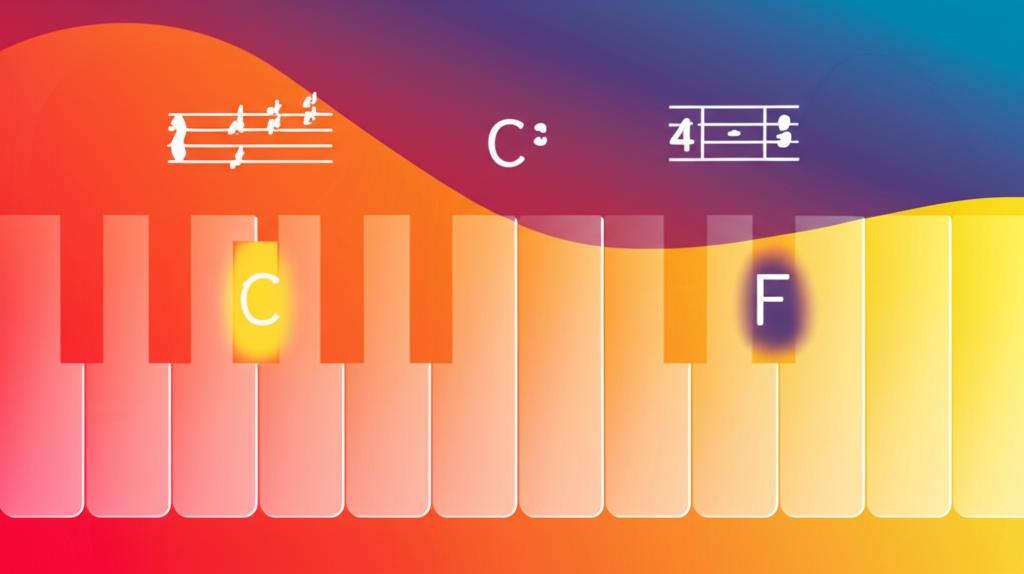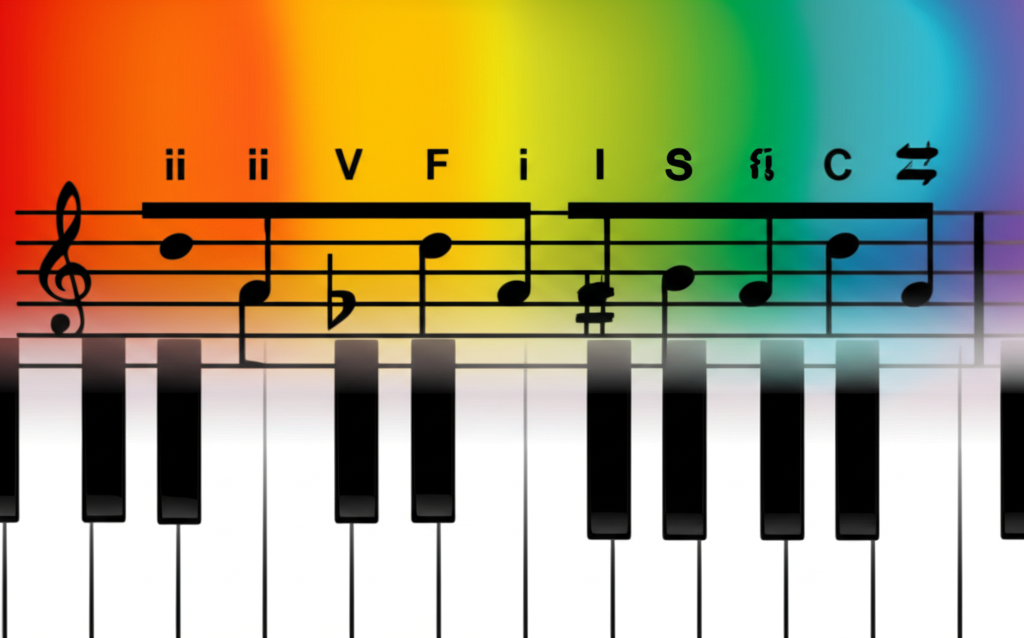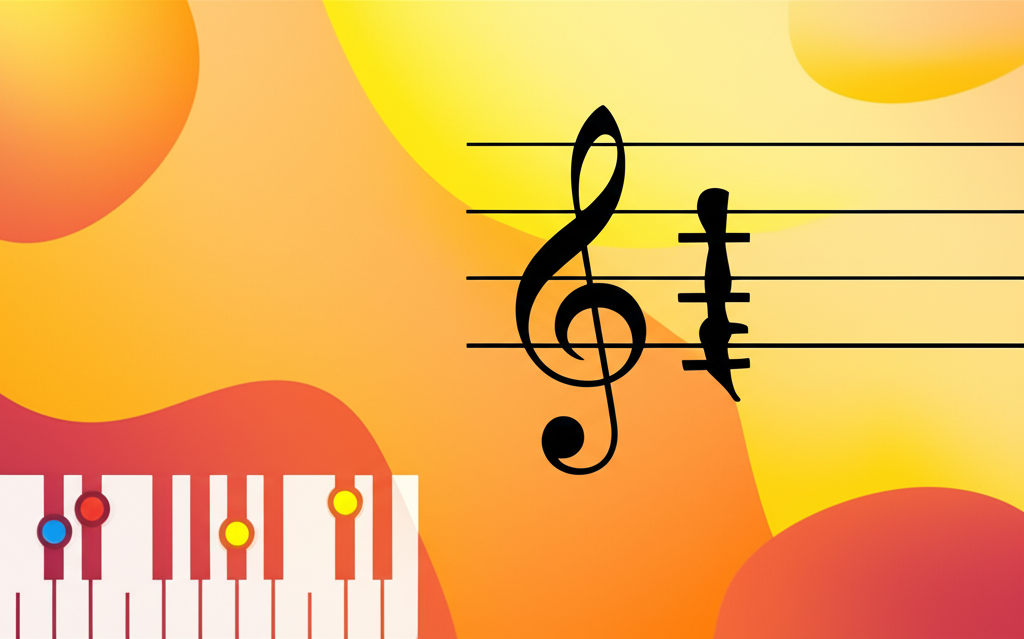
I-IV-V-I Chord Progression: The Foundation of Western Music

b4n1
May 19, 2025, 8:21 a.m.
I-IV-V-I Chord Progression: The Foundation of Western Music
Summary:
The I-IV-V-I chord progression is one of the most fundamental and widely used harmonic structures in Western music. Used extensively in classical, folk, blues, rock, and pop music, this progression forms the harmonic backbone of countless songs across genres and time periods. Understanding this progression is essential for any musician, composer, or music enthusiast.
Keywords:
chord progression, harmony, tonic, subdominant, dominant, cadence, popular music, Western harmony, functional harmony, I-IV-V-I
Introduction:
The I-IV-V-I progression is often considered the cornerstone of Western music harmony. These Roman numerals represent chords built on the first (I), fourth (IV), and fifth (V) scale degrees of a key, followed by a return to the first (I). This progression creates a sense of movement, tension, and resolution that has shaped our musical expectations for centuries. The ubiquity of this progression across diverse musical genres speaks to its psychological and acoustic significance in how we perceive and process music.
Definition and Classification:
The I-IV-V-I progression consists of the following chords:
- I (Tonic): The home chord built on the first scale degree. It provides a sense of stability and resolution.
- IV (Subdominant): Built on the fourth scale degree, it creates movement away from the tonic.
- V (Dominant): Built on the fifth scale degree, it creates tension that seeks resolution back to the tonic.
- I (Tonic): Return to the home chord, providing resolution and closure.
In the key of C major, this progression would be C major (I), F major (IV), G major (V), and back to C major (I).
Variations of this progression include:
- I-V-IV-I: A rearrangement that's common in folk and country music.
- I-IV-V (without the final I): Often used in blues as a recurring pattern.
- I-IV-V-IV: A variation that delays the return to the tonic.
- I-IV-I-V-I: An expanded version with more movement between the chords.
Examples:
Example in C Major (ABC Notation):
Here's a basic I-IV-V-I progression in C major with whole notes:
Example with Melody:
Here's a simple melody built over the I-IV-V-I progression:
Example in G Major:
The same progression in the key of G major:
Practical Applications:
The I-IV-V-I progression is the foundation of countless songs across many genres:
- Rock and Pop: "La Bamba" by Ritchie Valens, "Twist and Shout" by The Beatles, "Wild Thing" by The Troggs
- Blues: The 12-bar blues structure incorporates I-IV-V (though typically without resolving directly to I at the end of each phrase)
- Folk: "Down in the Valley," "Red River Valley," and many traditional folk songs
- Country: "Your Cheatin' Heart" by Hank Williams, "I Walk the Line" by Johnny Cash
- Classical: Many classical pieces use this progression for cadences and resolutions
The I-IV-V-I progression is particularly useful for:
- Songwriting and composition basics
- Improvisation frameworks, especially in blues and rock
- Understanding harmonic function and tension-resolution patterns
- Ear training and recognizing common progressions
Historical Context:
The I-IV-V-I progression emerged from Western classical music theory developed during the common practice period (roughly 1650-1900). Its origins can be traced to the concept of functional harmony, where chords have specific roles and relationships.
In the early 20th century, this progression became central to blues, which then heavily influenced the development of rock and roll in the 1950s. Chuck Berry, Buddy Holly, and Elvis Presley all relied heavily on this progression, cementing its place in popular music.
Johann Sebastian Bach's work contains numerous examples of this progression, though often with more elaborate voice leading and embellishments. Later composers like Mozart and Beethoven continued to use this progression as a foundational element in their compositions.
Fun Facts:
- The famous "Heart and Soul" duet that many people learn as their first piano piece is based on the I-IV-V-I progression.
- In blues music, the V chord is often played as a dominant 7th (V7), adding even more tension before resolution.
- Some estimates suggest that over 80% of all pop songs from the 1950s and 1960s used this progression in some form.
- Australian comedy rock group Axis of Awesome demonstrated in their viral song "Four Chords" that dozens of hit songs use a slight variation of this progression (I-V-vi-IV).
- In Nashville, session musicians often refer to this progression simply as "One, Four, Five" and can instantly play it in any key requested.
Conclusions:
The I-IV-V-I progression remains the cornerstone of Western harmony because it effectively creates a musical journey of departure and return. It establishes a home (I), moves away (IV), builds tension (V), and returns home (I), mirroring the narrative arc found in stories and other art forms.
While contemporary music continues to explore increasingly complex harmonic territories, understanding the I-IV-V-I progression is essential for any musician. It serves as a foundation upon which more complex harmonic ideas can be built and understood. Whether you're a beginner just starting to learn music theory or an advanced musician, the elegant simplicity and emotional effectiveness of this progression deserves appreciation and study.
References:
Tagg, P. (2014). Everyday Tonality II: Towards a Tonal Theory of What Most People Hear. The Mass Media Music Scholars' Press.
Temperley, D. (2018). The Musical Language of Rock. Oxford University Press.
Levine, M. (1995). The Jazz Theory Book. Sher Music Co.
Moore, A. F. (2001). Rock: The Primary Text: Developing a Musicology of Rock. Ashgate Publishing.
Everett, W. (2008). The Foundations of Rock: From "Blue Suede Shoes" to "Suite: Judy Blue Eyes". Oxford University Press.


























